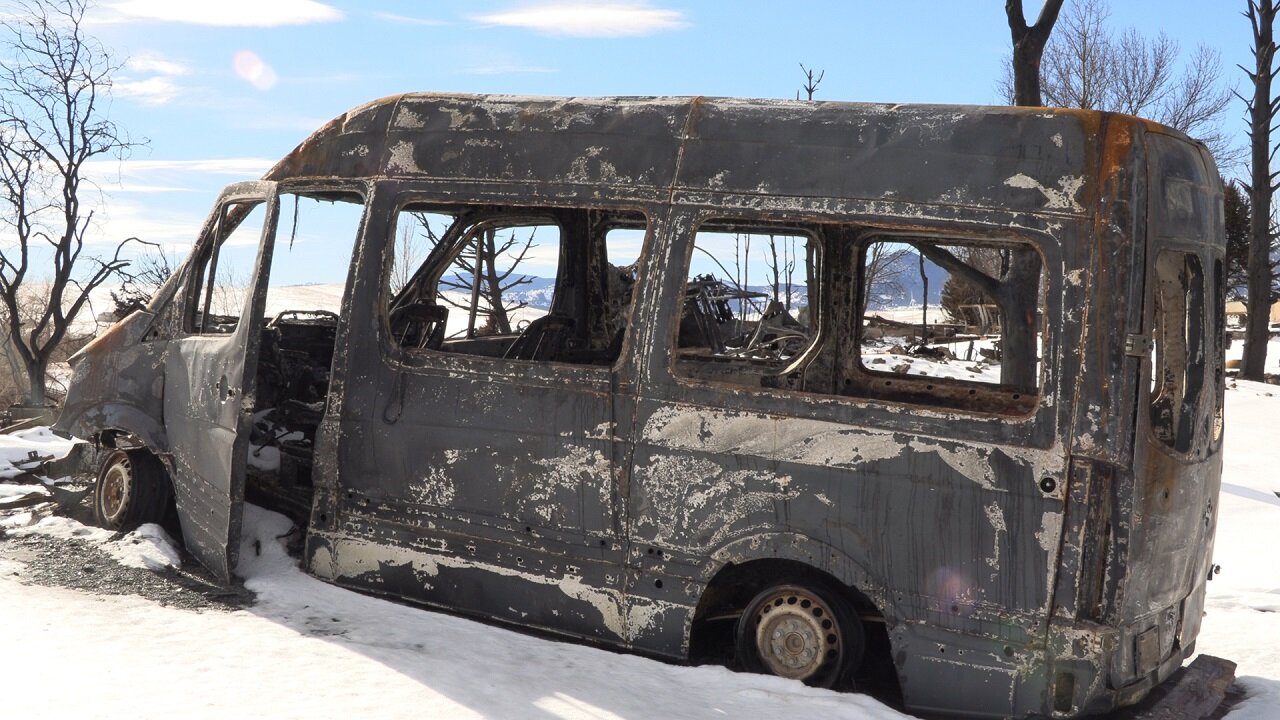A wildland fire in the suburbs: The ongoing challenges with the Marshall Fire

BOULDER COUNTY, Colo. — As the ongoing investigation continues about what sparked the Marshall Fire, first responders shared with Rocky Mountain PBS the logistics and uniqueness of fighting this fire. The Marshall Fire is considered to be what first responders call a “two-fold,” meaning it was a wildland fire and an urban fire.
“This fire was unprecedented, especially within Colorado,” said Mike DeFries, the information officer for the Marshall Fire and a firefighter with the Sugarloaf Fire Protection District.
A wildland fire is the type we are most used to seeing in Colorado, burning in open areas with a lot of trees and grass. The U.S. forest service also described wildland fires as, "a force of nature that can be nearly as impossible to prevent, and as difficult to control, as hurricanes, tornadoes, and floods."
DeFries further explained that while the fire broke out on the edge of a suburb, its flames became what he called a “firestorm” that acted as a wildland fire spreading quickly and uncontrollably, but instead of burning trees and grass, it burned homes.
“We are dealing with this fire as an all-hazard situation,” DeFries explained. “All-hazards means we have, yes firefighters, but we are dealing with the potentials of chemicals, there is utility involved, gas and electric. We have a massive effort from agencies throughout the state and the region to deal with what’s left on the ground.”
DeFries explained that because snowfall covered up the rubble, it is not safe for people to return to their homes in certain areas, and even if they can, he urges people to be very cautious. He said anything from glass, nails, and other sharp objects could be hidden underneath.
Since the start of the fire, the biggest priority for first responders was to make sure people were safe.
“Getting people to safety through the areas was the number one concern at a certain point for first responders. At the same time we were looking for opportunities to take on the fire,” said DeFries.

Working alongside DeFries is Todd Legler, the forest risk manager for the Shoshone National Forest. As an expert in wildland fires, Legler drove from Cody, Wyoming to provide critical insight to tackle the flames and keep firefighters safe. Legler said because this fire was two-fold — urban and wildland — many specialty teams and firefighters were assigned to help. Legler said structural-fire fighters focused on suppressing the fires in urban communities. Hazmat teams came in and cleared areas, and thermal imaging was used to find hot spots. Legler said that technology is typically used for wildland fires, but in this instance, it was used to find residual heat in basements. Legler said it was essential to find these hot spots because they could potentially start another fire, but also to find any remaining burning items that can cause toxic fumes, something not usually a main concern with forest fires.
“I think all of these incidents hit home to us as fires responders. In the wildland, it's trees, grass, and brush that burns. In an urban setting like this, this is people’s lives and it’s tough for us as first responders to go through this. We have families, and we live in similar situations. We always emphasize to our firefighters to show compassion in these types of settings, to be patient with people,” Legler said. “We are taking care of each other because if we can take care of ourselves, that allows us to do our job. We provide mental health resources to our firefighters because they carry this home with them as well.”
DeFries shared similar emotions and said, “I think all of us as first responders, no matter where we come from, we can empathize with people that we are serving in locations such as this.”
More than 1,000 homes were destroyed along with seven businesses in the Marshall Fire in Louisville, Superior, and unincorporated Boulder County. The latest estimate of cost for the damage is more than $513,000,000.
“It is heartbreaking for many to know the damage that took place,” DeFries said. “It's going to be a long road for many people and it’s going to take a lot of support from their communities.”
If you want to see ways to help those impacted by the wildfires, we have put this list together.
Lindsey Ford is a multimedia journalist with Rocky Mountain PBS. You can reach her at lindseyford@rmpbs.org.
